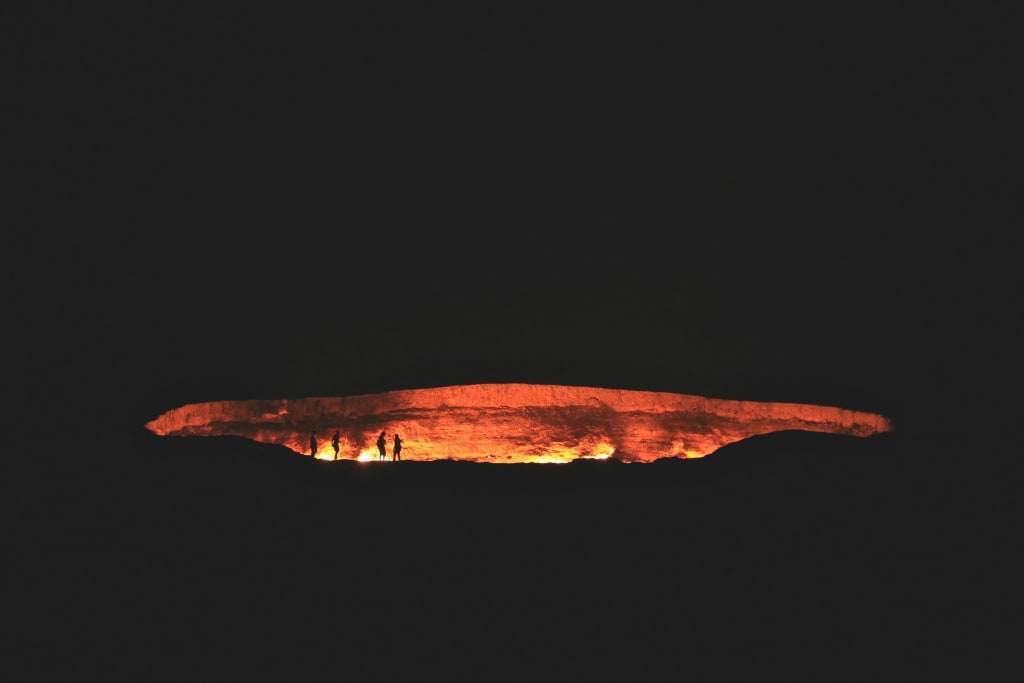HELL Found At Bottom Of Deepest Hole On Earth?!
The Kola Borehole: Digging into the Earth's Secrets

Since elementary school, we have been taught about the different layers of the Earth. However, recent discoveries have shown that the chart we all know might not be accurate. This raises the question, why are we trying to fly out and invade other planets when we are still unaware of what lies beneath our feet?
Although we have abused our planet, and we need to find other habitable places, it is essential to understand what we know about the Earth before moving on. Contrary to popular sci-fi movies, such as The Core, we have not reached the core. The deepest we have dug is in Russia on the Kola Peninsula, where there is a 7.5-mile-deep hole that is man-made. This hole is called the Kola Borehole, and it is deeper than the deepest point in the ocean, which is 6.8 miles deep.
So, why are people trying to dig a super-deep hole towards the center of the earth? The answer is competition. In the late 1950s and 1960s, while competing in the space race, the United States and the Soviet Union were also competing in exploring the Earth's interior. Both nations planned to drill into the Earth's crust, to drill the deepest hole in the world.
The American drilling project was called Project Moho and was executed in the spring of 1961. The goal of the project was to drill into the Moho, which is the boundary between the Earth's crust and the mantle. The project was not successful, and it was cut short due to a lack of funding just five years later.
The Soviet drilling process started in 1970, and with the help of the interdepartmental Scientific Council for the study of the Earth's interior and super-deep drilling, they were able to drill the deepest hole in the world, the Kola Superdeep Borehole. By drilling seven and a half miles downwards, they made some groundbreaking discoveries.
One of the benefits of digging so deep into the Earth was that the Soviets were able to put geological theories to the test. One of the discoveries made was that there is no transition from granite to basalt between three and six kilometers beneath the surface, as many scientists had originally thought. The basalt extended beyond the 12-kilometer point, which made scientists rethink their original theories.
At around 4.3 miles deep, cracks in the rocks were found to contain water. This was an amazing discovery because no one expected water to exist at such great depths. Researchers realized that the water inside the rock cracks was probably caused by hydrogen and oxygen atoms squeezed out and then retained below the surface because of the impermeable rock above.
Finally, one of the most amazing discoveries made through the project was the detection of life in the form of microscopic fossils found in rocks that were more than 2 billion years old. From the fossils, researchers were able to find the remains of 25 different species of plankton.
Sadly, the Kola Superdeep Borehole project was halted in 1994 because of a variety of reasons. One reason was that it was getting too hot down there, with temperatures at the bottom of the hole reaching a scorching 356 degrees Fahrenheit. This was such a huge difference from the expected 212 degrees Fahrenheit that it was almost unbearable for people to continue further.
The rock density also increased, resulting in crater Raza tea and permeability. In other words, it was like drilling through plastic rather than solid, making it a very difficult operation. There are also other hypotheses on why the drilling stopped. After the discovery of water within the hole, people started to believe that the hole was associated with the tale of Noah's Flood because it was believed that after the massive flood, all the water drained into the subterranean.
In conclusion, the Kola Borehole project was a significant milestone in understanding the Earth's interior. Although the project was halted, the discoveries made through the project have helped scientists to have a better understanding of the Earth's crust, mantle, and the possibility of life existing below the surface. It is essential to continue exploring the Earth and its secrets before we move on to other planets.
About the Creator
Enjoyed the story? Support the Creator.
Subscribe for free to receive all their stories in your feed. You could also pledge your support or give them a one-off tip, letting them know you appreciate their work.





Comments (1)
Test is not accepting comments at the moment
Want to show your support? Send them a one-off tip.